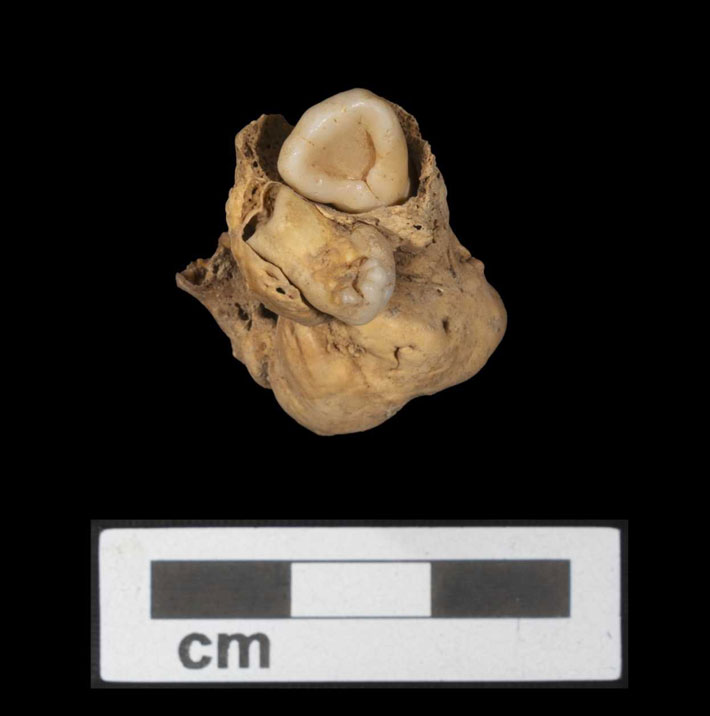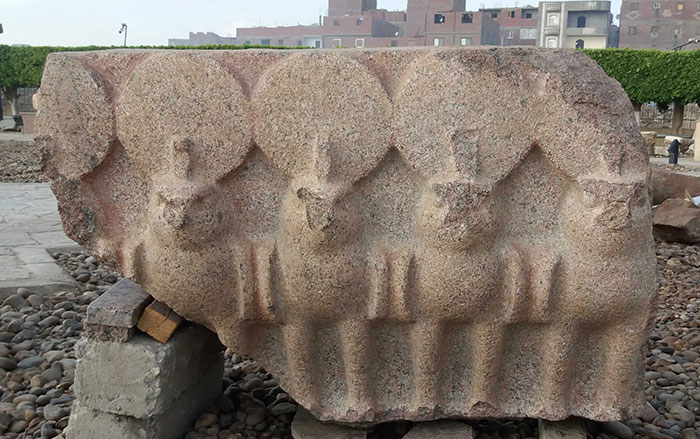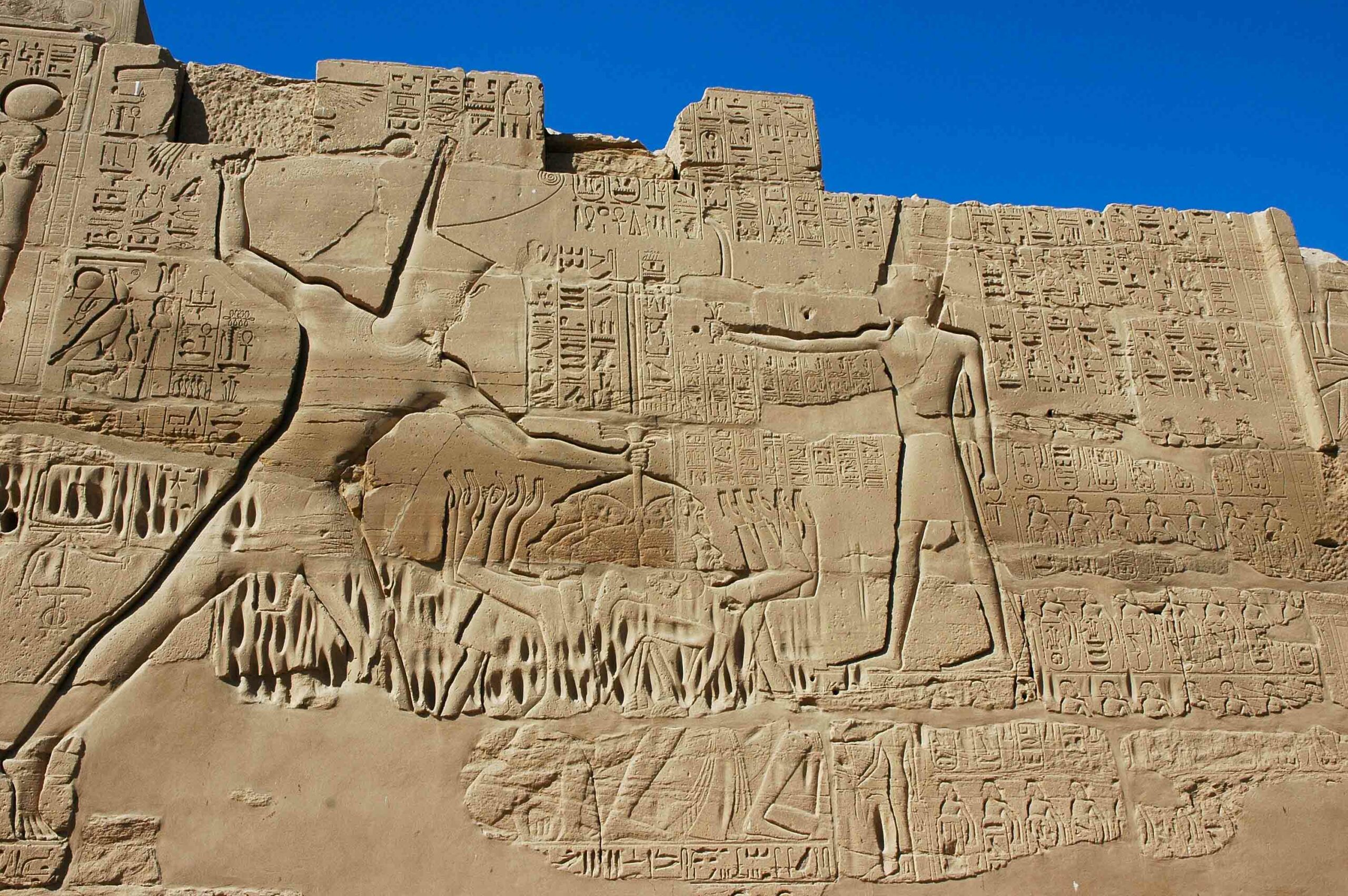 CARBONDALE, ILLINOIS—A team of scientists led by bioarchaeologist Gretchen Dabbs of Southern Illinois University Carbondale has identified a possible ovarian teratoma in the more than 3,000-year-old burial of a young woman, according to a Live Science report. The woman’s remains were found wrapped in a plant fiber mat in the cemetery in Amarna, Egypt. A ring decorated with an image of Bes, a deity associated with childbirth, fertility, and protection, had been placed on her left hand, which rested above the location of the teratoma. The tumor, which contained two deformed teeth and likely produced pain and swelling, appeared as a bony mass about the size of a large grape during the excavation of the woman’s pelvis. The researchers concluded that the woman may have worn the image of Bes on a ring as “magico-medical” protection against symptoms produced by the teratoma, or perhaps to help her conceive. To read about burials at Amarna of individuals wearing distinctive headpieces, go to "Egyptian Coneheads."
CARBONDALE, ILLINOIS—A team of scientists led by bioarchaeologist Gretchen Dabbs of Southern Illinois University Carbondale has identified a possible ovarian teratoma in the more than 3,000-year-old burial of a young woman, according to a Live Science report. The woman’s remains were found wrapped in a plant fiber mat in the cemetery in Amarna, Egypt. A ring decorated with an image of Bes, a deity associated with childbirth, fertility, and protection, had been placed on her left hand, which rested above the location of the teratoma. The tumor, which contained two deformed teeth and likely produced pain and swelling, appeared as a bony mass about the size of a large grape during the excavation of the woman’s pelvis. The researchers concluded that the woman may have worn the image of Bes on a ring as “magico-medical” protection against symptoms produced by the teratoma, or perhaps to help her conceive. To read about burials at Amarna of individuals wearing distinctive headpieces, go to "Egyptian Coneheads."
Rare Ovarian Tumor Discovered in Egyptian New Kingdom Burial
News November 7, 2023

Recommended Articles
Artifacts March/April 2025
Egyptian Bes Cup

Mapping the Past May/June 2019
The Goldmine Papyrus

Features March/April 2019
Egypt's Eternal City
Once the most sacred site on the Nile, Heliopolis was all but forgotten until archaeologists returned to save it from disappearing forever


-
Features September/October 2023
Ukraine's Lost Capital
In 1708, Peter the Great destroyed Baturyn, a bastion of Cossack independence and culture
 (Leonid Andronov/Alamy Stock Photo)
(Leonid Andronov/Alamy Stock Photo) -
Letter from Vesuvius September/October 2023
Digging on the Dark Side of the Volcano
Survivors of the infamous disaster rebuilt their lives on the ashes of the a.d. 79 eruption
 (Courtesy Girolamo Ferdinando De Simone)
(Courtesy Girolamo Ferdinando De Simone) -
Artifacts September/October 2023
Padlock
 (Courtesy James Davidson)
(Courtesy James Davidson) -
Digs & Discoveries September/October 2023
Nose to Tail
 (Lisa See collection. The Huntington Library, San Marino, California)
(Lisa See collection. The Huntington Library, San Marino, California)


